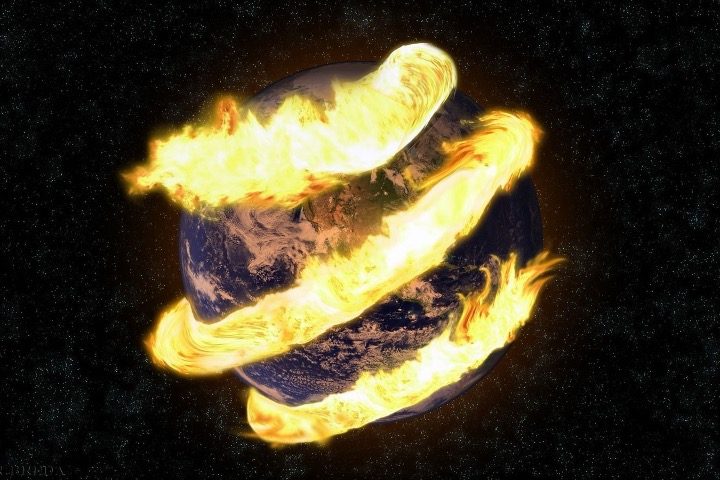
On March 19, the United Nations’ weather-watching agency, the World Meteorological Organization (WMO), issued its latest “State of the Climate Report” — and the news was not hopeful. In fact, according to the UN, climate change has gotten so bad that WMO Secretary-General Celeste Saulo claimed that the new report represents a “red alert” for humanity as it pertains to climate change.
The report is full of the hyperbole and angst-ridden proclamations that we’ve come to expect from the UN, complete with the spurious claim that 2023 was the “warmest year on record.” The report trumpeted grim warnings about heat waves, floods, droughts, wildfires, and rapidly intensifying tropical cyclones.
“Never have we been so close — albeit on a temporary basis at the moment — to the 1.5° C lower limit of the Paris Agreement on climate change,” Saulo warned. “The WMO community is sounding the Red Alert to the world.”
UN Secretary-General António Guterres, of “global boiling” fame, was his usual hyperbolic self when discussing the release of the new report.
“Sirens are blaring across all major indicators.… Some records aren’t just chart-topping, they’re chart-busting, and changes are speeding up,” Guterres exclaimed. “Thousands killed, millions displaced, crops failing, and vast economic losses. The impact on sustainable development is devastating. Every fraction of a degree of global heating impacts the future of life on Earth.”
The 53-page report itself was full of the convoluted and meandering edicts that we’ve come to expect from a UN climate report. Some of the key messages included:
“2023 was the warmest year on record at 1.45 ± 0.12 °C above the pre-industrial average.”
All-purpose bogeyman greenhouse gases were declared to be at a “record high”:
Concentrations of the three main greenhouse gases –—carbon dioxide, methane, and nitrous oxide — reached record high observed levels.
The authors were particularly focused on the alleged loss of sea ice, something that very few can observe for themselves. We just have to take their word that it’s true:
Antarctic sea-ice extent reached an absolute record low in February. The annual maximum extent was around 1 million km2 below the previous record low maximum.
Preliminary data from the global set of reference glaciers for the hydrological year 2022-2023 show they experienced the largest loss of ice on record (1950–2023), driven by extremely negative mass balance in both western North America and Europe.
Glaciers in Switzerland lost around 10 percent of their remaining volume in the past two years.
And “extreme weather,” which includes fires, was also a concern for the WMO team:
Extreme weather continued to lead to severe socio-economic impacts. Extreme heat affected many parts of the world. Wildfires in Hawaii, Canada and Europe led to loss of life, the destruction of homes and large-scale air pollution. Flooding associated with extreme rainfall from Mediterranean Cyclone Daniel affected Greece, Bulgaria, Türkiye, and Libya with particularly heavy loss of life in Libya.
The report also predicted with “high probability” that 2024 is going to be another “record” warm year. So, more predictions and more chances for climate-alarmist failure, which they’ll never acknowledge.
Luckily, climate realists are pushing back against the UN pronouncements.
The “claim of a high probability of a record warm year is already headed towards low probability territory even as the statement was issued. Had the WMO acted like meteorologists rather than climate alarm advocates, they would have noticed an inconvenient fact that never made their report: the El Niño which ‘contributed to the rapid rise in temperature from 2022 to 2023,’ is on the way to the cooler La Niña phase already,” said the creator of the website Watts Up With That, Anthony Watts, in a refutation of the report.
According to Watt, the WMO is using 2023, an admittedly warm year, as proof of a long-term climate trend.
“The UN is conflating yearly weather patterns with long term climate change. The WMO itself defines climate as measured trends over a 30 year period, being an average of weather over 30 years. A single year of warm temperatures means nothing in the long-term scheme of things for climate change,” he wrote.
“Creating a ‘red alert’ alarm over a single year of warm temperatures driven by El Niño, especially since indicators show the driver is now on the way down, is not only irrational, it’s an irresponsible red herring,” Watts concluded.
And that’s, of course, what the UN does. It issues doomsday proclamations in its push for more of the world’s money and increasing authority over the affairs of humanity. Those proclamations don’t need to be true or even believable — they just need to be frightening.




